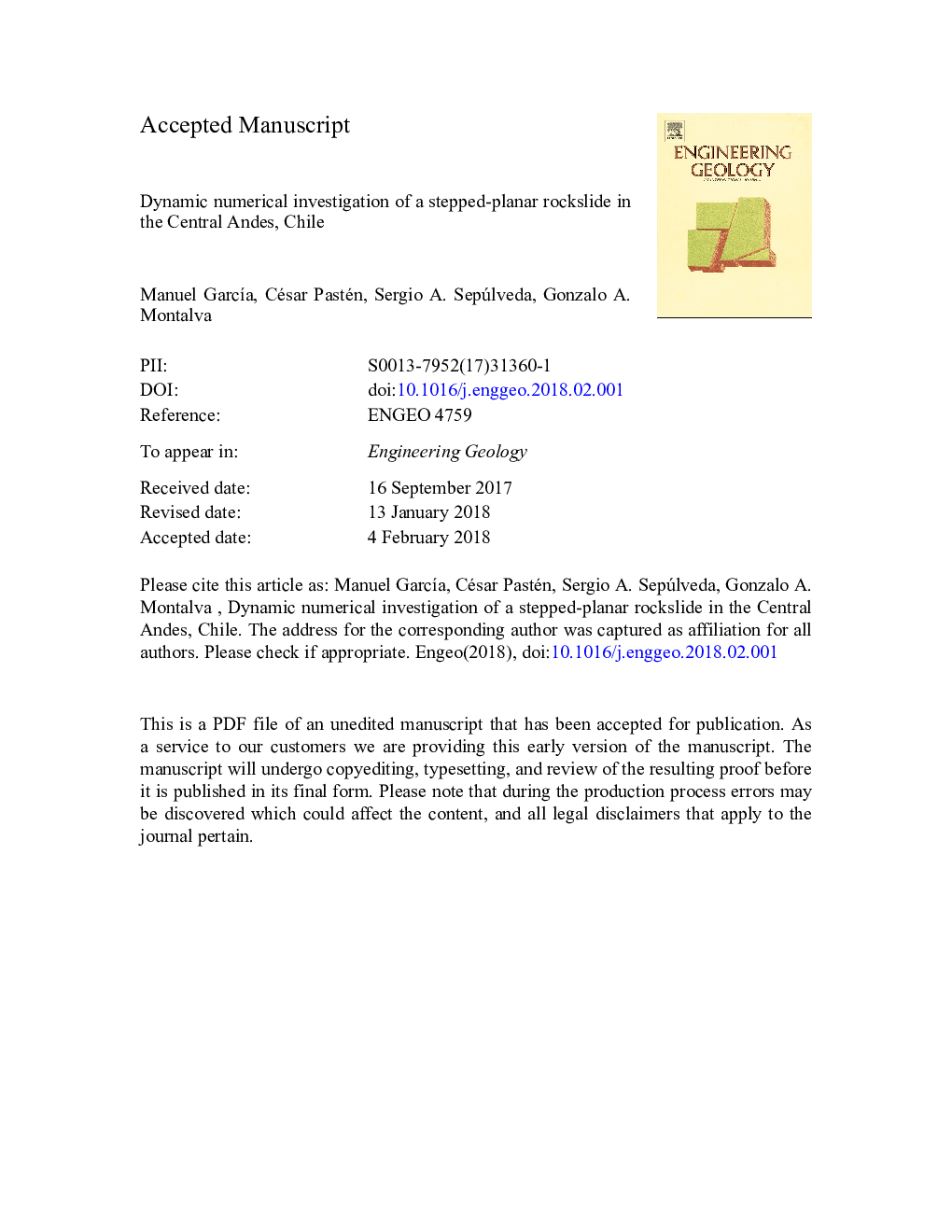| کد مقاله | کد نشریه | سال انتشار | مقاله انگلیسی | نسخه تمام متن |
|---|---|---|---|---|
| 8915915 | 1641748 | 2018 | 52 صفحه PDF | دانلود رایگان |
عنوان انگلیسی مقاله ISI
Dynamic numerical investigation of a stepped-planar rockslide in the Central Andes, Chile
ترجمه فارسی عنوان
بررسی عددی دینامیکی از یک سنگسار پله ای استوار در ایالت مرکزی، شیلی
دانلود مقاله + سفارش ترجمه
دانلود مقاله ISI انگلیسی
رایگان برای ایرانیان
کلمات کلیدی
موضوعات مرتبط
مهندسی و علوم پایه
علوم زمین و سیارات
مهندسی ژئوتکنیک و زمین شناسی مهندسی
چکیده انگلیسی
In this paper, static and dynamic analyses were performed considering the reconstituted geometry of a prehistoric 0.1â¯km2 rockslide with an exposed stepped-planar failure surface using a distinct element code (UDEC®). The rockslide occurred on the northern slope of the Cerro Catedral mount, located in the headers of the Maipo river drainage basin (Main range of the Andes Cordillera) at the latitude of the Santiago city, Chile, between the Late Pleistocene and the Holocene. The remaining failure surface consists of two distinct sliding planes dipping at an angle of ~37° and connected by a sub-vertical step. The original geometry of the rock slope was estimated from a terrestrial laser scan elevation model (LIDAR), the deposit that remained in the valley, and the hill surface topography. The laser scan of the sliding surfaces and Schmidt hammer field measurements allowed the estimation of the sliding surface mechanical properties, whereas laboratory test results were used to estimate the rock mass material properties. Results from 2D static numerical analyses indicate that the rock slope requires the presence of at least one rock bridge at the sliding surface connecting step in order to be statically stable. Furthermore, we studied the effect of different acceleration time histories recorded during shallow crustal earthquakes, compatible with the regional seismicity, in the rockslide response. The dynamic numerical analyses show that the input earthquake records induce a pronounce topographic amplification in the rock slope, that the rockslide displacement highly correlates with the Arias Intensity, the peak velocity, and the peak acceleration calculated in the rock slope center of gravity, and that the rockslide may have been triggered by horizontal accelerations larger than 0.6â¯g in the free field. Finally, the slope's response is evaluated under the coupled action of horizontal and vertical accelerations.
ناشر
Database: Elsevier - ScienceDirect (ساینس دایرکت)
Journal: Engineering Geology - Volume 237, 10 April 2018, Pages 64-75
Journal: Engineering Geology - Volume 237, 10 April 2018, Pages 64-75
نویسندگان
Manuel GarcÃa, César Pastén, Sergio A. Sepúlveda, Gonzalo A. Montalva,
